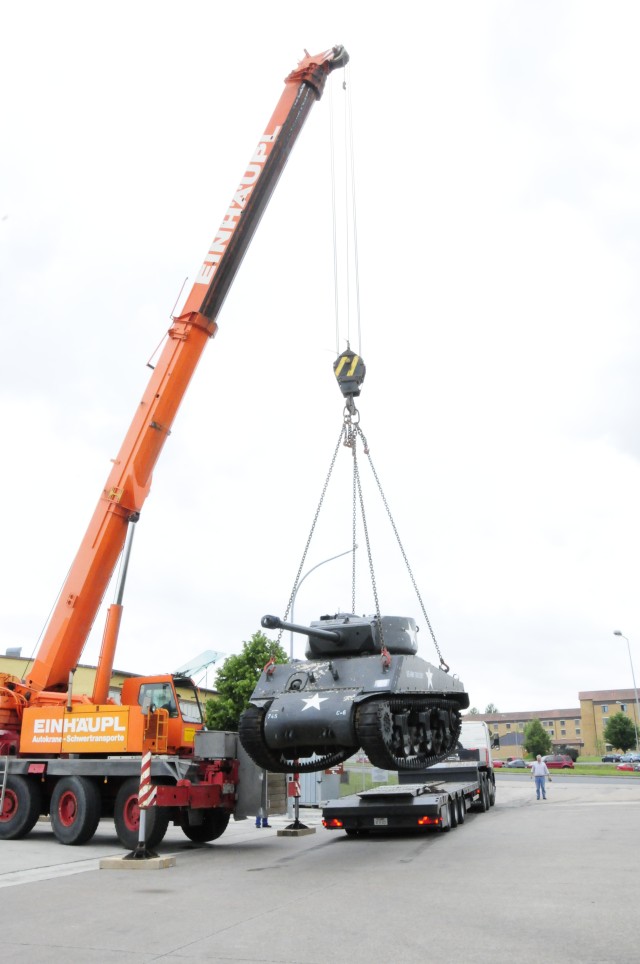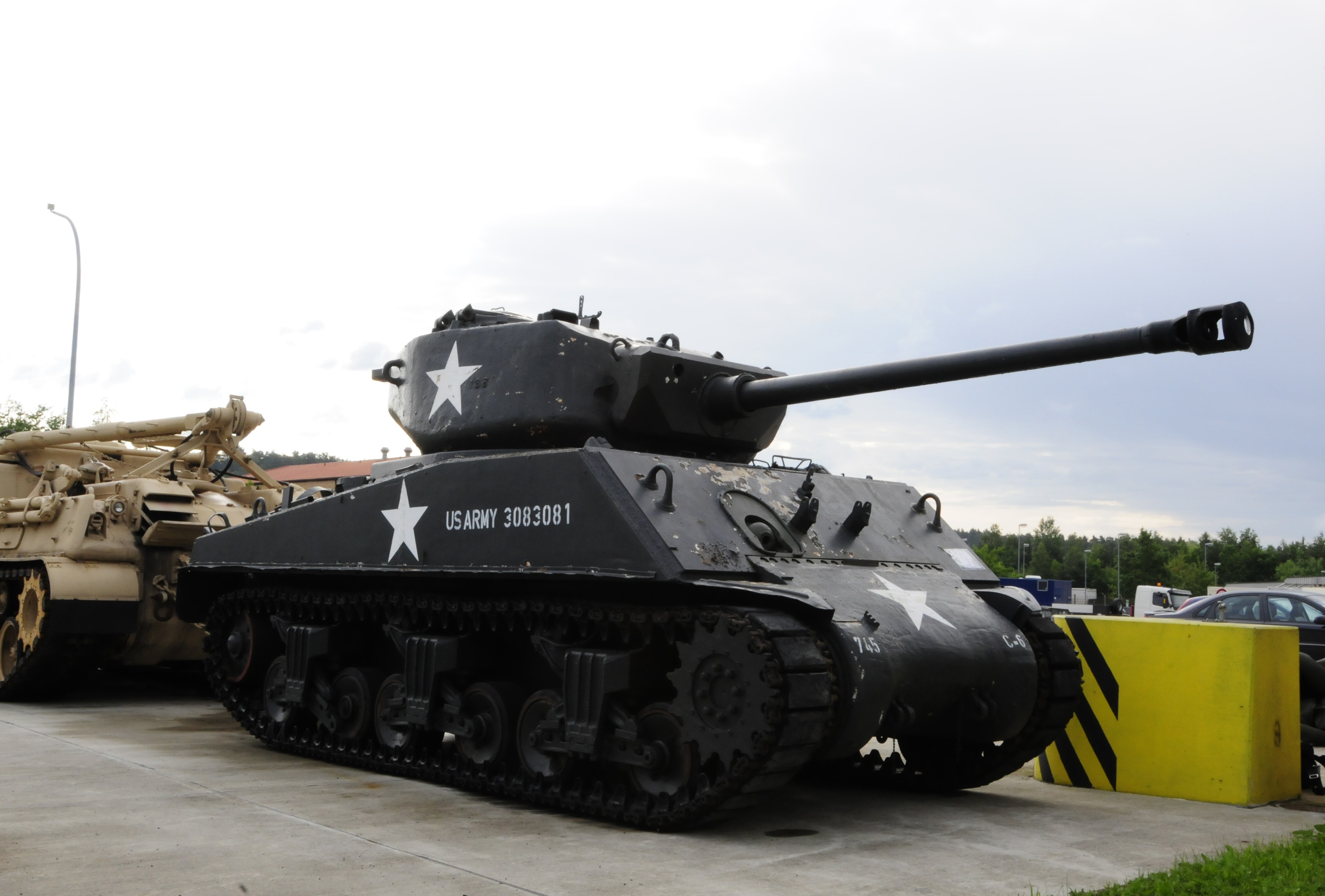GRAFENWOEHR, Germany - Sixty-five years after making its mark on American military history, the Cobra King is headed home.
The 3.6 ton, World War II-era M4 Sherman "Jumbo" tank, which was identified by U.S. Army officials as the first tank to break through German defenses and reach surrounded American troops during the Battle of the Bulge, was lifted from its Vilseck home June 9 for transport to the Patton Museum at Fort Knox, Ky.
To prepare the steel warrior for transport, staff members from the Maintenance Activity Vilseck first had to tow the vehicle one kilometer from the Rose Barracks' gate, where one staff member said it has sat on display for at least 25 years, to the MAV for cleaning.
Mark Manzo, U.S. Army Garrison Grafenwoehr, Logistics Plans and Operations Division chief, said the cleaning process took more than 160 hours before Cobra King passed the stringent customs inspections.
The tank, which will travel first to Bremerhaven, Germany, and loaded to sail June 17, is expected to arrive stateside July 6.
According to a recovery and restoration plan submitted by Len Dyer, Patton Museum director, it will then undergo a two-phase reset.
"My intent is to reset Cobra King in appearance to her historic state as pictured on the day after the relief of Bastogne," Dyer states in the plan.
Phase one will remove the current M-1A1 76mm main-gun that was installed in March 1945 (a year after the tank broke through Bastogne) at the direction of Lt. Gen. George S. Patton Jr., commander of the 3rd U.S. Army, to give the vehicle greater firepower against German Panthers or Tigers. The Patton Museum will then replace the gun with the original Jumbo version, an M-3 75mm, L38 main-gun.
Phase one will also see the vehicle repainted and the track replaced with a standard track with duck bill extensions, which was originally installed on Jumbos to provide better flotation across the ground due to the increase in the vehicle's combat weight.
Phase one is expected to take six weeks to complete.
The interior will be restored during phase two. An estimate of how long that will take, however, will not be available until the Cobra King has been inspected by museum staff.
"The idea is to try to keep the original components on the equipment," said Gabriele Torony, U.S. Army Europe curator.
The tank, Torony added, will be moved to the U.S. Army Museum in Washington, D.C., with its expected opening in 2013, to serve as "the feature, historically significant artifact in the World War II gallery."
An honor fitting, said Manzo, for a vehicle that played such a critical role in the war.
"The Battle of the Bugle was a significant event which changed the course of the war. The Cobra King was the lead tank in the break out of the encirclement of Bastogne which changed the course of history. It is the only artifact which can be placed at such a pivotal point in the war."








Social Sharing